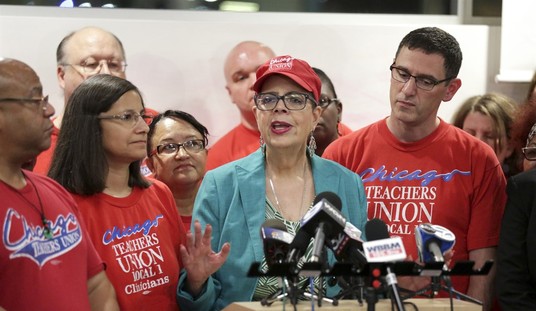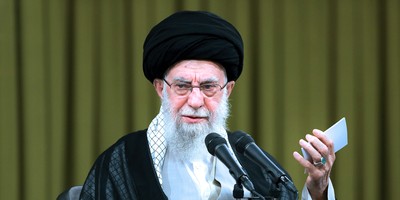Iran's parliamentary elections are scheduled for March 2. With most of the reformist politicians banned from participating, the elections are shaping up to be a competition between Iran's two dominant conservative camps: the populists, led by Iranian President Mahmoud Ahmadinejad, and candidates supporting the clerical establishment, led by Supreme Leader Ayatollah Ali Khamenei. Though it is unlikely that even a large win for Ahmadinejad's faction would threaten the nature of the clerical regime in the near term, Ahmadinejad is trying to build a movement that can eventually wrest more control from the clerical elite. This election may indicate whether Ahmadinejad has made progress toward that goal.
Analysis
Iran will hold elections for its parliament, known as the Majlis, on March 2. These will be the first nationwide elections since the disputed 2009 presidential contest that saw the rise and swift fall of the reformist Green Movement. With many reformist leaders under house arrest or imprisoned and with the majority of the reformist parties barred from participating, the upcoming elections will be a political competition fought among Iran's conservatives.
The populist conservatives, led by Iranian President Mahmoud Ahmadinejad, have been challenging the clerical elite, led by Supreme Leader Ayatollah Ali Khamenei, since the 2009 election for ultimate control of the state. While the supreme leader's pre-eminent role in the government does not appear to be at risk in the near term -- even if Ahmadinejad's populist faction manages to take the majority of parliamentary seats -- Ahmadinejad hopes to build a movement that can sustain his push for a government less captive to an unelected clerical elite, and the Majlis has become a key battleground for this effort.
Intra-Conservative Rift
Iran's conservatives can be roughly divided into two camps: those who believe the supreme leader has "faslol khatab," or final say in all matters, and those who do not. Ahmadinejad is leader of the latter camp, having used his two terms to establish the presidency as a position in competition with the supreme leader for executive authority.
Ahmadinejad initially had a good relationship with Khamenei and had his support during the contested 2009 presidential election. This began to deteriorate before the regime crushed protests by the Green Movement, with Ahmadinejad demonstrating that he would not quietly follow all Khamenei's mandates.
Recommended
His independent streak first emerged when Khamenei ordered Ahmadinejad to dismiss his closest associate, Esfandiar Rahim Mashaei, from the post of first vice president shortly after Ahmadinejad's re-election in 2009. Ahmadinejad then appointed Mashaei as presidential chief of staff in a clear attempt to countermand the intent of Khamenei's order. This independence has grown more pronounced since that time, with Ahmadinejad dismissing former Foreign Minister Manouchehr Mottaki on Dec. 13, 2010, while Mottaki was on an official trip abroad, encouraging the resignation of several Cabinet members, and forcing the resignation of intelligence chief Heidar Moslehi on April 18, 2011, against the direct wishes of the supreme leader. The supreme leader refused Moslehi's resignation and ordered him to return to work, prompting Ahmadinejad to abstain from his official duties for 10 days in protest.
Ahmadinejad and his supporters present a serious threat to the current clerical regime and its key stakeholders and beneficiaries. A populist conservative who draws his support from the rural poor, Ahmadinejad has said power should be vested in the elected government, while the clerics should have a guidance role. This implicitly criticizes the Islamic republic's principle of Velayat-e-Faqih, or rule by Islamic jurists, on which the clerical elite stakes its legitimacy. (Explicitly challenging the principle would not be tolerated, especially from a sitting president.) The conflict stems from the contradiction in the institutional nature of the Islamic republic, being both a parliamentary democracy and a clerical theocracy headed by the supreme leader, who is not popularly elected. Khamenei and the clerical elite, along with their allies in the judiciary and the parliament, are hoping to use the elections to slow the momentum of this emerging class of non-clerical politicians and prevent the further erosion of their authority.
Election Stakes
Although some districts have more than 10 different parliamentary lists vying for seats, there are only two possible parliamentary outcomes for which the Iranians will be voting. Beyond the potential to clearly cement a certain faction within the legislative body, these elections will also serve as a referendum on Ahmadinejad's policies and his practice of rejecting the preferences of the supreme leader. With the president scheduled to appear for questioning before the Majlis by March 20 and several of his associates being indicted by the judiciary on claims of corruption, the clerical elite sense an opportunity to reverse the conservative populists' momentum.
Ahmadinejad's current term will end in 2013, and he will be ineligible to run for his third and final term until 2017. (Under Iranian law, an individual may run for three presidential terms but only two may be consecutive.) Khamenei's chances of having a pro-clerical presidential candidate win and potentially hold the seat for the next eight years will be much improved with Ahmadinejad unable to run himself. This is of great importance since the 72-year-old supreme leader's health is rumored to be declining. Ahmadinejad's goal is to elect a populist presidential candidate without much of his own power base, enabling Ahmadinejad to run again in 2017 as the populists' favored candidate. Regardless of whether Ahmadinejad's candidate wins, he will spend the next four years building a political movement that can carry him to a third term, though having an ally in the presidency would help this effort, as would taking a large share of the parliamentary seats up for election on March 2.
There are several structural obstacles Khamenei can put in Ahmadinejad's way. The Guardian Council, half of whom are clerics appointed by the supreme leader, must approve all candidates for public office. The council would almost certainly disqualify Mashaei were he to announce his candidacy. Former IRNA chief Ali Akbar Javanfekr, another of Ahmadinejad's most vocal supporters, was banned by the judiciary from politics for five years after his appeal was denied Feb. 29. He was initially arrested for implying that Khamenei's statements were more suggestions than orders. These disqualifications forced Ahmadinejad to quietly back provincial hopefuls and others out of the political spotlight. The supreme leader has also allowed the judiciary -- headed by Sadeq Larijani, the brother of current Majlis speaker and Khamenei ally Ali Larijani -- to indict several figures within Ahmadinejad's circle in an ongoing corruption and embezzlement scandal. Even Ahmadinejad has been summoned by the Majlis to be questioned on this issue. Several key supreme leader appointees, such as the secretary of the Expediency Council, publicly have placed blame on the current government rather than on international sanctions for Iran's ongoing economic woes, including a 40 percent drop in the value of Iran's currency since sanctions began.
This is not to imply that Ahmadinejad is without advantages of his own. Ahmadinejad still enjoys significant support from the rural poor, veterans and those outside the patronage circles of the clerical elite or the Islamic Revolutionary Guard Corps (IRGC). Even among the clerical elite, Ahmadinejad has some level of support, and the IRGC is more or less divided. The president or his allies within the government have visited rural regions several times in the past months to announce various construction projects or government aid programs. The populist direct payment project implemented by Ahmadinejad to replace the previous subsidy program all but guaranteed the support of the poor.
Also helping Ahmadinejad is that, while Khamenei holds the paramount leadership post in the country as supreme leader, he lacks the type of religious credentials possessed by the previous supreme leader and founder of the republic, Ruhollah Khomeini. Khamenei lacks support from influential theologians, and even within the wider clerical community, the Velayat-e-Faqih concept is not universally agreed upon. If candidates supporting Ahmadinejad are able to take control of the Majlis, Ahmadinejad may be able to exploit these divisions within the clerical body to bring more clerics to his side. This will require a nuanced approach. Whatever issues the clerical elite might take with Khamenei in the role of supreme leader, they will still want a governmental system that places them at the top of the power structure.
Unexpected Victors
Any discussion on the future of Iranian politics must take into account the growing political influence of the IRGC. The IRGC played a key role in supporting Ahmadinejad's 2009 victory, and Khamenei relied on its support early in his career to establish himself in his role as supreme leader after heated opposition from such clerical figures as Grand Ayatollah Hussein Ali Montazeri. The IRGC's increased role in the Iranian military and economy through business deals have expanded its political influence, but the biggest boon to the IRGC's increased role has been the intra-conservative rift.
As both sides vie for power, the IRGC has slowly risen to fill the void in the middle. Mohammad-Bagher Ghalibaf, the current mayor of Tehran and candidate in the March 2 elections, is a former commander of AFAGIR, the IRGC's air force, and a potential future presidential candidate. Iranian media also reported that Maj. Gen. Qassem Suleimani, the commander of the IRGC's Quds Force, might soon be replaced in order to allow him to run in the 2013 presidential election. Suleimani is in a stronger position than Ghalibaf, whom the clerics view as too liberal. But it should be noted that no retired IRGC commander has ever been elected president in Iran.
Ahmadinejad would also make history in Iran if he were able to win the 2017 election. No two-term president has ever been able to win the constitutionally permitted third term. Further, it is unlikely that Ahmadinejad will have any official post in the government in the intervening four years. Retaking the presidency is central to furthering the populists' movement to reduce the authority of the clerical establishment. To a large degree, the parliamentary elections will be a referendum on what Ahmadinejad has done thus far and what he will be allowed to do going forward.
This articel reprinted by permission of Stratfor.

























Join the conversation as a VIP Member